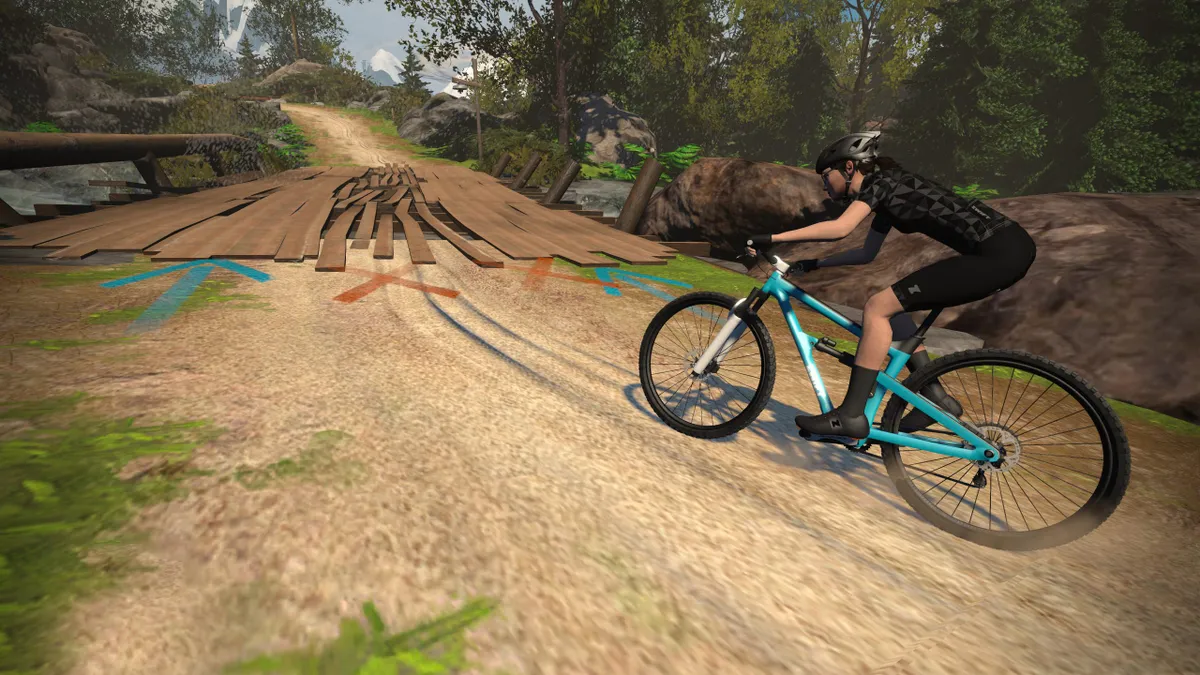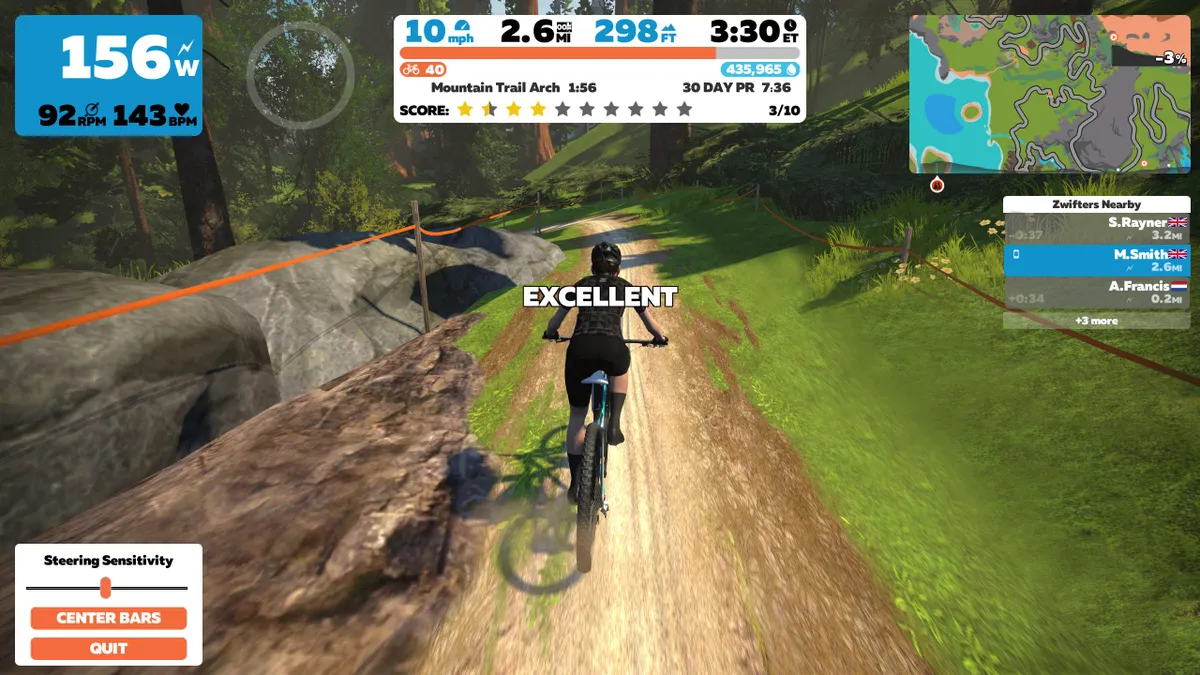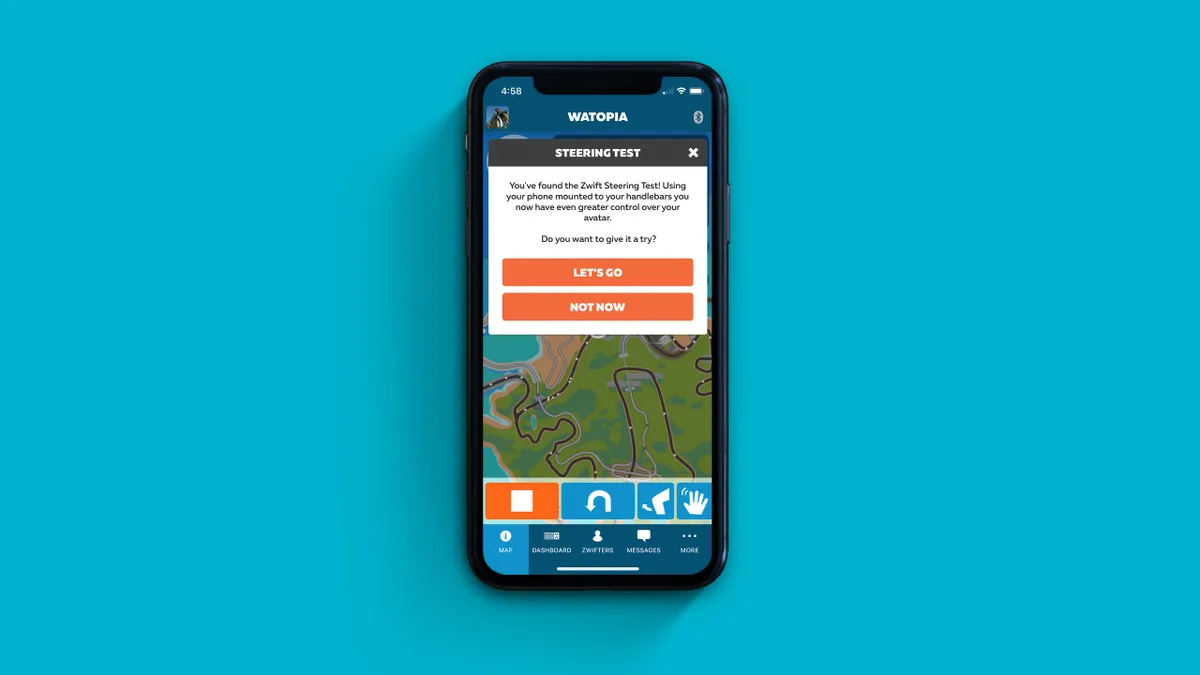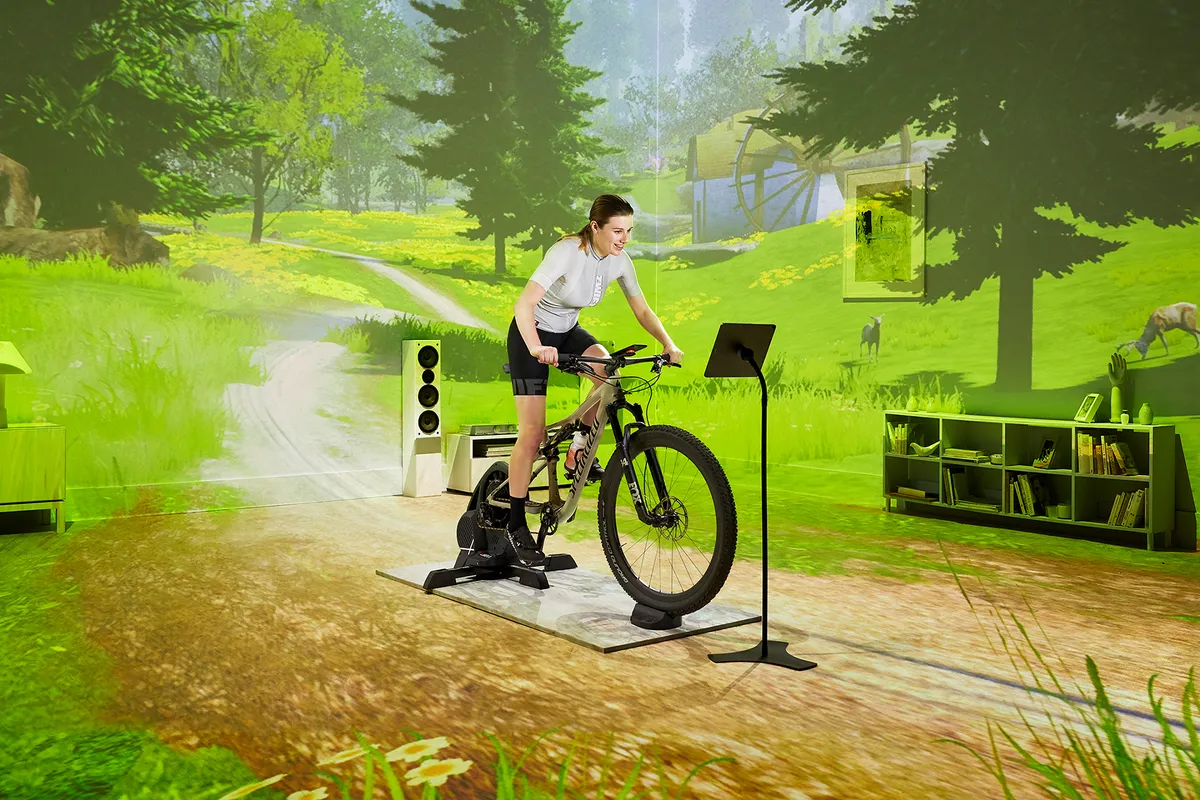If mountain biking isn’t the first thing to pop into your head at the mention of indoor training, you’re probably not alone. After all, up until recently it’s almost exclusively been the domain of road cyclists and triathletes looking to get the miles in and maintain a structured training plan over the winter period.
However, that’s all changing with the wide range of MTB-compatible smart trainers and indoor cycling apps now available, where indoor cycling has become a way for mountain bikers to supplement their weekly time on the trails.
Let’s take a look at some of the ways that indoor trainers and apps like Zwift can enhance your mountain biking and help make you an all-round stronger rider
Improved pedalling force
Having an efficient pedal stroke and being able to ride smoothly at lower cadences are key skills for mountain bikers. Steep terrain and loose conditions mean you have to maintain traction with a circular, consistent pedal stroke, all while laying down plenty of power to keep moving.
By creating custom workouts within Zwift you can take advantage of the high levels of resistance modern-day smart trainers can produce. It’s very quick and easy to create specific training conditions that closely mimic the demands of a challenging climb or tricky section of trail.
Zwift also has several mountain bike training plans and workouts built right into the game, meaning you can be sure all the sessions you’re doing are perfectly tailored to improving your fitness.
These include the Singletrack Slayer training plan, designed to replicate the demands of cross-country racing, while there’s also the challenging Cape Epic workout series. And the Dirt Destroyer works on building a solid strength base for off-roading.
How to sign-up to Zwift
Visit the Zwift website to sign-up for a free 7-day trial. After your trial period ends, Zwift costs £12.99 / $14.99 per month.

More power, more momentum
Any experienced mountain biker knows how ‘punchy’ off-road riding can be, where constant bursts of power are needed to maintain momentum over steep terrain or to quickly accelerate back up to speed after slowing down for a sharp corner.
In the absence of regular training on the trails to improve this power, you can find yourself lacking endurance in your longer outdoor rides, while the ability to recover quickly from these hard efforts can also suffer.
Zwift's pre-built interval workouts offer a perfect training platform to work on quicker recovery and the ability to repeatedly produce strong surges of power over and over again, allowing for better momentum and speed preservation on the singletrack.
In fact, the Dirt Destroyer training plan is designed specifically to work on your power at lower cadences and ability to surge and recover repeatedly.
Stay sociable
Part of what makes mountain biking so appealing is meeting up with like-minded friends and having a chat on the trails. Traditionally though, bad weather or a sudden change of circumstances would likely mean abandoning a ride entirely and missing out.
While the full off-road riding experience is impossible to fully replicate on a turbo trainer, Zwift’s wealth of routes, combined with plenty of organised group rides, workouts and even racing options, mean that immersive rides aren’t exclusive to being outdoors.
On top of that, you can use the Zwift companion app on a phone or tablet device to create private Zwift meetups with friends to ensure you don’t miss out on any of the chat that the original ride promised.
Because of the sheer amount of cyclists riding around in Zwift’s virtual courses at any one time, it’s also a great way to connect with other mountain bikers from around the world too.

Keep it fun
Riding an MTB isn’t just about pushing on the pedals hard – there are many subtle manoeuvres and skills that contribute to the fun factor of off-road riding. When the bad weather rolls in or your schedule doesn’t allow for much time on the trails, it’s this dynamism that can be missed the most.
Fortunately, there’s a fun and intuitive way for mountain bikers to practice similar movements without needing to leave the house.
The new steering function on Zwift's off-road course uses your phone’s accelerometers to cleverly track the position of your front wheel. This adds a new element to indoor training, which has traditionally been very static compared to riding outside.
Simply by mounting your phone on your handlebars, you can turn the wheel left and right to move your avatar in the game in real-time, making your virtual mountain bike ride that much more engaging.
Zwift will then give you feedback on how you rode a particular feature on the course, so that you can work on getting it faster and faster each time.
Meanwhile, Elite’s Sterzo Smart platform allows you to steer in Zwift without using the companion app, and is ideal for getting the most out of the singletrack courses and mountain bike events.
Okay, so it's not the same as hitting the trails, but it gives you a fun way to practice similar movements when you otherwise might not get on the bike.

Set fitness benchmarks
For mountain bikers interested in tracking their improvements in fitness, Zwift is one of the best cycling software tools available for structured, repeatable testing.
These tests have a number of benefits for off-road riders, from the ability to lay down a benchmark of fitness to measure against in the future, to setting training intensity zones with which to structure your training.
Once you have these training zones set up, you can track how much time you’re spending in each zone and target the specific training adaptations you want to see. Zwift will also use these zones to tailor your structured workouts.
We've got a full guide on how to take an FTP or ramp test on Zwift.

More riding time!
Finally, it’s a sad truth that mountain biking isn’t always the most time-efficient sport. After all, there's a whole lot of MTB clothing, components and gadgets involved in getting out on the trails and often a long clean-up process needed post-ride.
This all serves to make off-road riding out of reach for a lot of mountain bikers during the working week and, heaven-forbid, even on some busier weekends too.
Using a mountain bike on a smart trainer makes the whole process much more streamlined when time is tight, and makes getting in an additional 2-3 hours of riding time each week a much more realistic prospect.
Even 30-45 minutes of structured indoor riding a few times per week can result in big performance improvements down the line, helping you to get the most out of your time on the trails.

